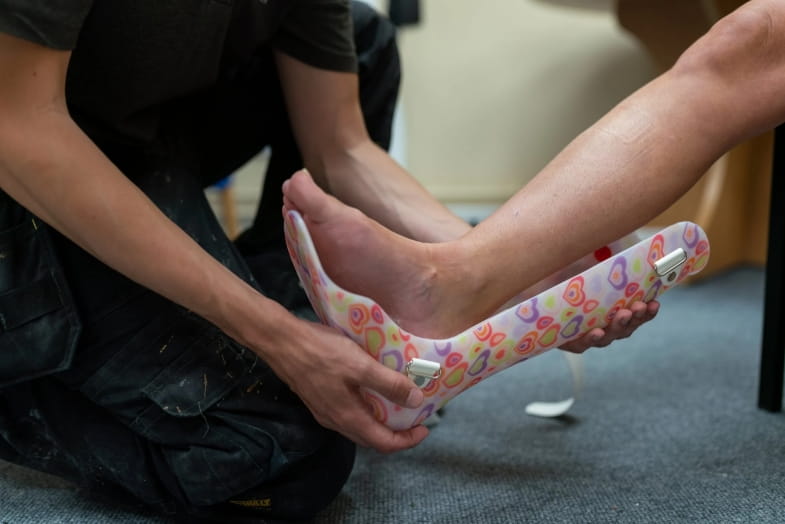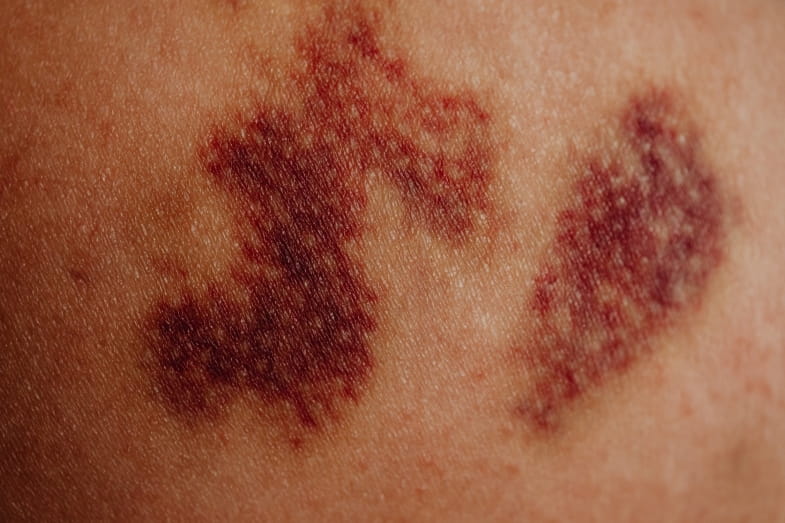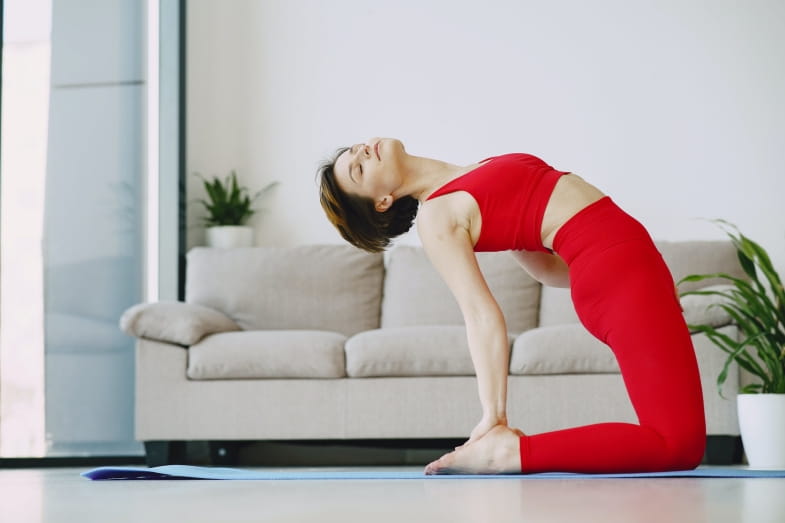Like any physical activity, pole dancing carries a risk of injury. Understanding the common types of injuries is essential to preventing and controlling them.
This guide will provide an overview of 7 common pole dance injuries. Learn about these injuries and how to prevent them!
You can then continue to enjoy the many benefits of pole dancing safely and confidently. Keep scrolling to learn more!
7 Common Pole Dance Injuries
This list provides a detailed overview of seven common pole dancing injuries, including symptoms, causes, and treatment options.
Shoulder Injuries
Shoulder injuries are the most common injury that can occur with pole dancing.
This sport needs a high level of upper body strength and puts pressure on the shoulders. But this flexibility also makes the shoulder vulnerable to injury.
Some of the most common shoulder injuries in pole dancing include:
- Rotator cuff strains
- Tendonitis
- Bursitis
- Dislocations
First, rotator cuff strains occur when the muscles and tendons are overstretched or torn. Tendonitis is inflammation of the tendons that attach muscles to bones.
Bursitis is an inflammation of the fluid-filled sacs that cushion the joints. Finally, dislocations occur when the upper arm bone protrudes from the socket.
Many factors can contribute to this injury in pole dancing, including:
- Incorrect technique
- Too much exercise
- Lack of conditioning
- Cooling down is not enough
Specifically, improper posture or movement can put stress on the shoulder joint. Besides, overuse injuries can occur when muscles and tendons have no time to rest and recover.
Also, a lack of conditioning can contribute to shoulder injuries. In this case, the muscles may not be strong enough to support the joint during the vigorous movements of pole dancing.
Finally, inadequate warm-up and cool-down can contribute to this injury. The muscles and tendons may not be okay for the stress of a workout.
We must note that you do not attempt to return the shoulder to its original position if a dislocation is suspected.
Read more: Shoulder Mount Pole Dance Tips And Tricks!
Wrist Injuries
We know this sport requires a lot of wrist strength and flexibility. Unfortunately, wrist injuries are common in pole dancers.
Hence, they can be debilitating and painful. Some of the most common wrist injuries from pole dancing include:
- Strains
- Tendonitis
- Carpal tunnel syndrome
Like the above injury, a muscle strain occurs when the muscles and tendons in the torn wrist. Meanwhile, a sprain is due to the ligaments connecting the bones in the wrist being stretched or torn.
Carpal tunnel syndrome is a condition that occurs when the median nerve, which runs through a narrow segment in the wrist, becomes compressed or pinched.
Regarding the causes of these injuries, we see similarities with the shoulder injuries mentioned. They also come from poor engineering, overuse, inadequate air conditioning, and inadequate warm-up and cooling.
If this injury occurs, follow a rehabilitation program to prevent further damage and promote healing. Wrist injury treatment options may include:
- Physical therapy
- Medicine
- Rest
- Ice or heat therapy
In severe cases, you may have surgery to repair damaged tissue and restore wrist function.
Back Injuries
Common back injuries when pole dancing:
- Herniated disc: The cushion between the spinal vertebrae is out of its normal position. Hence, it puts pressure on the nerves. Also, symptoms include back pain and weakness in the legs.
- Spinal stenosis: The spine narrows, putting pressure on the spinal cord and nerves.
There are two reasons why pole dancers are prone to back injuries. First, it is possible that they performed the same poses many times. This process can cause muscle strain and lead to this issue. Second, as with other injuries, poor technique and lack of warm-up are common causes.
There are several steps to ease the pain. In particular, rest is essential to help the injured area heal. Besides, applying ice to the affected area can reduce swelling and inflammation.
Heat therapy can promote healing and reduce pain. Also, a physical therapist can provide exercises to strengthen muscles and prevent future injuries.
We also recommend massage to help relieve muscle tension and promote relaxation.
Read more: Is Pole Dancing Good For Your Back?
Knee Injuries
Knee injuries are often caused by overuse or improper technique, such as:
- Improper grounding
- Foot or leg placement
- Overloaded knee
These types of injuries can range from minor bruises and muscle strains. Besides, you may see ligament or cartilage tears and even fractures.
The most common knee injury is PFPS (runner’s knee). This condition is characterized by dull, aching pain around the kneecap.
Besides, the pain is aggravated by bending the knee or performing repetitive knee-bending activities. Specifically, you will experience more pain when running or jumping.
An imbalance in the muscles around the knee can be the reason. These muscles can lead to abnormal movement of the kneecap. Hence, it increases pressure on the joint.
Also, you may have a meniscus tear. It occurs when the cartilage that cushions the knee joint is torn due to sudden swinging or turning movements.
It can cause pain and limit the range of motion in the knee. Hence, you may need surgery to repair or remove damaged tissue.
Seek prompt medical attention to assess its severity if you have a knee injury. Then you can develop an appropriate treatment plan. Treatment options can be similar to those we’ve covered in other types of trauma.
Read more: Is Pole Dancing Bad For Your Knees?
Ankle Injuries
Pole dancing involves a lot of footwork, jumping, and landing. So they are prone to injury.
First, they are dislocated ankles – the most common ankle injury among pole dancers. They occur when the ligaments around the ankle joint are stretched or torn due to sudden movements, twists, or falls.
Specifically, symptoms include pain, swelling, bruising, and difficulty walking or putting weight on the affected ankle.
The second is a broken ankle. It occurs when one or more bones in the ankle joint are broken. This injury is usually caused by a severe twist or fall.
Symptoms of this injury are the same as the one above. If you have this condition, immobilize the affected ankle with a cast or brace.
Finally, Achilles tendonitis is an overuse injury. For the unknown, this tendon connects the calf muscle to the heel bone. Improper jumping or landing can easily lead to this injury.
To treat Achilles tendonitis, rest the affected ankle. Besides, avoid activities that put stress on the Achilles tendon.
Read more: Can I Pole Dance With Weak Ankles?
Head Injuries
Concussions are the most common issue when it comes to these injuries. It occurs when the brain hits the inside of the skull. This issue can happen when a person falls and hits her head.
Besides, scalp lacerations can occur during pole dancing. These injuries can be caused by falling or hitting your head against a pole. Symptoms may include bleeding and pain.
The last one is the skull fracture – a crack in one or more bones that make up the skull. With this injury, you may experience headaches and nausea.
These head injuries can be caused by conditions that you have already had. They have epilepsy or a concussion history.
Bruising
The stress of pole dancing can lead to bruising – small blood vessels under the skin bursting. Some common bruising injuries include bruising to the legs, arms, and torso. There are some factors:
- Friction from pole
- Collisions with other objects
- Impact on landing after turning
If a dancer doesn’t perform a trick or spin correctly, it can put undue pressure on a particular body area. The result is bruising. Besides, overuse of a muscle group or joint can also lead to this condition.
But the good news is that they will heal with time. So you can wait a while for the bruise to fade. But we have some tips to speed up the healing process.
First, apply ice to the affected area. This tip will help reduce inflammation and swelling. So it can help speed up the healing process.
Also, you can use a warm compress on the bruise to increase blood flow. Then, it will help the bruise heal faster.
Besides, you can use arnica. It is a natural anti-inflammatory. You can opt for a cream or take it as a homeopathic remedy.
Read more: How To Avoid Pole Dancing Bruises?
Time For A Pole Dancing Injury To Heal
The time for a wound to heal can vary depending on the injury’s severity. Besides, the treatment method used can affect.
Minor injuries such as bruises, strains, and sprains can take days to weeks to heal. More severe injuries like broken bones or torn ligaments can take months.
Thus, seek medical attention to ensure proper diagnosis and treatment. Moreover, it takes a lot of time for the wound to fully heal before returning to pole dancing.
Also, you should not join in other physical activities during this time. Returning too soon can lead to further injury or re-injury, prolonging healing.
Besides seeking medical attention and allowing proper healing time, take precautions. The goal is to avoid future injury. We will analyze these tips in more detail in the next section.
Ultimately, be patient and follow the suggested treatment plan. Hence, you can ensure proper recovery and return to pole dancing.
How To Avoid Injury When Pole Dancing?
Whether you’re a beginner or an experienced dancer, take steps to minimize the risk of injury. This section explores essential tips to avoid pole dancing injuries.
Then you can enjoy all the benefits of this challenging and rewarding exercise. Here are some tips:
Always Warm Up And Cool Down
Warming up and cooling down are essential in any physical activity, including pole dancing.
Warming up helps prepare the body for exercise. It increases blood flow to the muscles and joints. It helps relax tense muscles and reduces the risk of injury.
So it is recommended to warm up at least 10-15 minutes before pole dancing. A proper warm-up routine might include:
- Stretching exercises
- Light cardio exercises
- Bodyweight exercises
On the other hand, cooling down after pole dancing reduces the risk of soreness and injury. It helps you gradually lower your heart rate. Then, this tip allows your body to return to a resting state.
Therefore, like a warm-up, you should cool down at least 5-10 minutes after pole dancing. You can do the following:
- Lengthen
- Deep breath
- Foam roll
Hence, you can help prevent injury and improve overall performance by incorporating warm-up and cool-down routines into your pole dancing practice.
Know Your Body’s Limits
We must note that it is critical to listen to your body. Besides, don’t push yourself beyond your means.
So you must understand your strengths, weaknesses, and pre-existing conditions or injuries. You can know what moves to try and how much to push yourself during workouts by understanding your body’s limits.
Also, it is essential to communicate any concerns or limitations to your instructor. The aim is to ensure a safe and effective training experience.
Remember, trying too hard can lead to injury and hinder your pole dancing journey. So always prioritize safety and respect your body’s limits.
Use Proper Technique
Poor technique can lead to muscle and joint strain, increasing the risk of injury. Thus, learn proper techniques from a qualified instructor, then practice them consistently.
This process involves hand placement, body alignment, and movement execution. Also, avoid overexerting yourself or trying to perform moves beyond your skill level.
Use Grip Aids
These tools can help avoid pole dancing injuries. Specifically, they provide extra grip and traction. Hence, they allow you to hold the pole more firmly and reduce the risk of slipping or falling. There are several types of grip aids, including:
- Grip enhancement gloves
- Chalk
- Resin
- Grip liquid
But it is essential to use grip aids correctly to ensure they are effective and safe. Overuse of grip aids can lead to dependence on them. Hence, they weaken your grip and increase your risk of injury.
Also, choose the assistive device that best suits you and your skin type. Some may cause irritation or allergic reactions.
Read more: What Can I Use Instead Of Pole Grip?
Build Strength
As we mentioned, this sport requires significant upper body and core strength. Thus, you can improve your ability to perform movements correctly and safely by building strength in these areas.
Strength training exercises like pushups, pullups, and planks can help improve upper body and core strength. Meanwhile, stretching and yoga can help improve flexibility and balance.
But it’s important to progress gradually in your strength training to avoid exertion and injury. Also, prioritize rest and recovery so your body can recover and rebuild after a workout.
Nutrition
Nutrition plays a role in avoiding pole dancing injuries. Specifically, proper nutrition provides the body with the nutrients it needs to support muscle recovery and growth. Besides, you can boost your overall health and well-being.
Regarding macronutrients, adequate protein intake is essential for muscle repair and growth. Meanwhile, carbohydrates provide the body with the energy to exercise and perform.
Consuming fruits and vegetables can provide the body with essential vitamins and minerals. They can support overall health and reduce the risk of injury.
Also, hydration is critical to prevent dehydration and maintain optimal body function during exercise.
Thus, listen to the body’s signals of hunger and fullness. Then, fuel up accordingly and prioritize rest and recovery so the body can properly recover and rebuild after a workout. Maintain a balanced and nutritious diet!
FAQs
What Is The Risk Of Pole Dancing?
Pole dancing, like any physical activity, carries a risk of injury. But you can minimize these risks with appropriate technical, formal, and safety measures. Specifically, you can use anti-collision mats and partner detection.
Is Pole Dancing Hard On Your Body?
Yes, it is. Pole dancing can be hard on the body, especially for beginners. They may not have built the necessary strength and flexibility.
Yet, with suitable training and conditions, pole dancing can improve overall fitness and reduce the risk of injury.
Can Pole Dancing Be Healthy?
Yes, pole dancing can be a healthy form of exercise. It can improve:
- Power
- Flexibility
- Heart health
- Body awareness
Besides, it can also be a form of expression and stress relief.
Why Are Pole Dancers So Strong?
Pole dancers are strong because pole dancing requires a significant amount of core and body strength, flexibility, and balance. So consistent training and conditioning can lead to increased muscle strength and endurance.
What Are The Most Difficult Pole Dancing Moves?
Some of the most challenging moves include:
- Iron X
- Ayesha
- Phoenix
These movements require a high degree of strength, balance, and control. Thus, only experienced and trained pole dancers should perform.
Conclusion
Pole dancing injuries are common to both beginners and experienced dancers. Yet, by taking precautions, understanding the cause of your injury, and knowing how to treat it, you can reduce your risk of common pole dance injuries.
Remember to prioritize your safety and care for your body to avoid unnecessary injuries. With proper technique, conditioning, and a commitment to safety, you can continue to explore and push your limits in this exciting and dynamic form of exercise.
Stay tuned for more posts about pole dance!
Read more:










